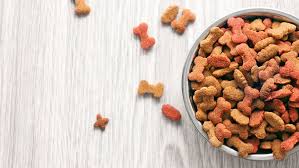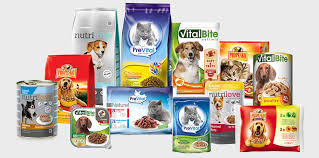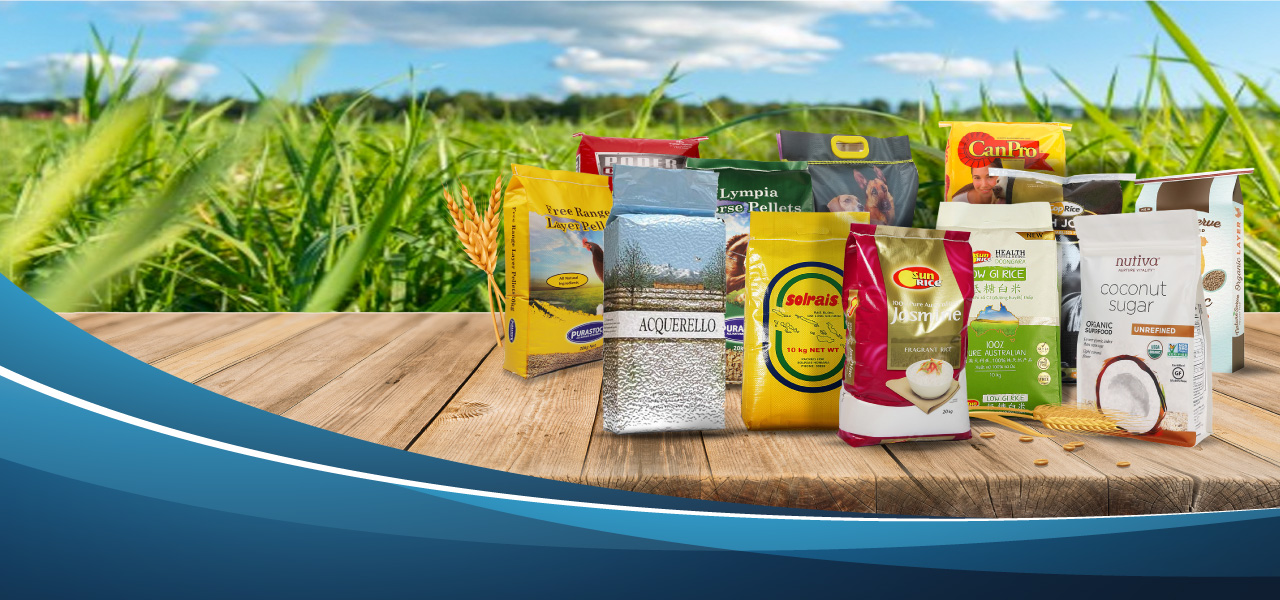Pet food packaging: trends and design in 2020
As the baby boomer’s ownership of pets declines, pet food packaging design turns its attention to millennial and Gen Z consumers. These young generations are rapidly redefining what it means to be a pet parent, including everything from pet food to how to shop.
Although millennial shoppers continue to favor healthier and more sustainable choices for their food, they are also looking for the same quality when shopping for the four-legged friends-they show that they are willing to pay for these additional Benefits of paying for food. According to a global study conducted by Nielsen, nearly three-quarters of millennials say they are willing to pay extra for sustainable products.
The pet food packaging market is valued at USD 9.92 billion in 2020 and is expected to reach USD 13.78 billion by 2026, growing at a CAGR of 6.79% during the forecast period (2021-2026). The growing popularity of the pet food packaging market is attributed to the increasing use of pets as companions and the growing awareness among owners to keep their pets healthy. The growing concern for pet health has led to the adoption of spill-proof and advanced pet food packaging to maintain the quality of pet food packaging.

Gen Z has a similar attitude towards consumers, with 55% of consumers saying that they will pay higher prices for products and services for companies that are “committed to a positive social and environmental impact.”
In addition to sustainable development and environmental impact, young consumers are also looking for pet foods that provide pets with superior taste and quality experience, and are labeled with healthy, natural ingredients. Pet parents are also seeking the convenience of convenient and easy-to-use packaging.
Pet food packaging situation right now:
The pet food packaging market was valued at $9.29bn in 2018 and is predicted to grow at to $12.9bn by 2024, at a CAGR of 6.79% for the forecast period of 2019-2024, according to the ‘Pet food packaging market – growth, trends, and forecast (2019 – 2024)’ report. With pet owners wanting more protective, informative, and tasteful packaging, manufacturers are pushing to improve labeling, and produce more intelligent pet food packaging.
Packaging is playing a key role in the strong growth of the pet food industry, especially when it comes to premium products. The bag or container allows manufacturers to stand out from dog and cat owners who want sustainable options, personalized pet diets and even human-friendly ingredients.
Trends to pet food packaging in the future
# Sustainable development
The sustainable development of pet food is not only the sustainability of its ingredients-packaging plays a key role in the environmental characteristics of products. According to a Mintel survey, 29% of American adults between the ages of 18 and 22 said they specifically bought environmentally friendly products.
Using intelligent design and material selection, there are several ways to reduce the environmental impact of packaging. Look for packaging that is lightweight and usually uses less material. In addition, ensure that these materials come from renewable and sustainable sources, such as cardboard made from responsible forests or plastics made from plants such as sugar cane.
Another important sustainability aspect of pet food packaging is its ability to protect food, extend its shelf life, and prevent unnecessary waste. Choose a package to prevent exposure to light and oxygen to protect the taste, color, smell, and nutritional value of the product. Sterile and cooking cartons are a good example. This technology can extend the shelf life without preservatives or refrigeration.

Packaging scrapping is another important consideration for environmentally conscious consumers. Pet food brands should go further by clearly communicating the life cycle of packaging, including what products can be made once the packaging is recycled.
# Taste and quality
Pet parents are increasingly concerned about the deliciousness of feeding pets with high-quality ingredients. According to Mintel, four out of ten dog owners will take into account their pet’s taste preferences when choosing food-this is a more important decision factor than food with limited ingredients or grain-free. Among cat food buyers, 31% make decisions based on taste.
As further evidence of taste trends, pet food toppings or broths have become a growing part of the pet food industry, and currently, 12% of American cat and dog owners buy these foods. Mintel’s research shows that adding a bowler hat to dry or wet food can customize the diet experience for pets and can increase nutritional value.

Pet parents are also paying close attention to the quality of the ingredients listed on the label. According to Nielsen, sales of pet foods that do not contain GMOs increased by nearly 29% in 2018. Other “free” claims of sales growth include no corn, hormones, fillers, artificial preservatives and artificial colors.
# Label
Clean labeling is another area where pet food trends strongly reflect human food trends. The trend in cleaning labels is to list short, easy-to-understand ingredients on the label. In 2017, 62% of American consumers agreed that the fewer ingredients in food, the healthier; according to a survey, nearly 50% said they prefer foods without artificial additives.
Not surprisingly, many consumers want the meat to be highlighted in the pet food ingredient list. In fact, according to a survey, 40% of dog food buyers and 35% of cat food buyers base their purchase decisions on “real meat is the first ingredient.”
# Flexible packaging
Flexible packaging, such as single-serve or convenience-sized packaging, has gained more traction due to the accessibility and functionality they bring to pet owners. Small pet food pouches can be customized, hold different sized products, are portable, and keep the product fresh, giving it longer shelf life.
Not only does flexible packaging offer a safe barrier for pet food but it also eliminates waste due to its all-in-one nature.
New Packaging Styles to the U.S. Market
Flexible pet food packaging, like stand pouches for pet treats and big bags for dog food, is still a relatively new concept in the United States. Traditionally, animal feed and associated products have been packaged in large boxes, flimsy bags, or rigid canisters. New developments overseas have pushed flexible packaging to the forefront, making it the preferred choice for highly influential modern brands across the globe. Companies that utilize intriguing, fashionable packaging that is sleek and highly functional are drawing in new customers and reshaping the marketplace in exciting ways.
We’re seeing more and more pet businesses using unique packaging styles for their food and treats because they stand out from the competition and draw in consumers. One trend being observed at trade shows is the packaging of smaller meals for cats and dogs. These single-use feasts are produced to satisfy the needs of smaller pet breeds — a growing trend happening here in the U.S. As such, companies selling these products need to place a special emphasis on the way they are packaged. New pouch styles can be custom-tailored to fit nearly any size product while keeping air out, prolonging the shelf life and freshness of the food inside. Utilizing these inventive types of all-in-one packaging cuts down on extraneous waste while providing a strong but pliable barrier that maintains the quality and integrity of the pet food.
Why Pet Food Packaging Design Can Make or Break Your Brand’s Success
Pet food packaging design trends closely mirror those we see in “human food” categories. Demand for healthier and more sustainable options is driving change in the food packaging industry as a whole, and pet owners tend to include their pets in the healthier, more environmentally friendly food purchasing decisions they make on behalf of their families. They want their pet food to be “just as good” as the food they eat.
These decisions are most often made on the spot while standing in front of a supermarket shelf, so packaging design makes all the difference between your product being put in the cart or not.
Here are some of the top strategic questions that inform our customers’ pet food packaging designs:
– Is the package safe, with excellent shelf stability and barrier control? The structural design of your pet food packaging is as important as its aesthetic to keep pets safe and avoid damaging recalls.
– Is the package convenient? Will consumers easily be able to carry it home and effectively reseal it from first use to end-of-life?
– Does the structural design of your pet food packaging enable easier and more cost-effective transportation and warehousing?
– Is the package sustainable—either recyclable or fully biodegradable?
We’ve seen a healthy growth trajectory year-over-year in the premium pet food category, which means both greater opportunity and greater competition for manufacturers. While a lot of different factors determine the success of each brand, one of the greatest competitive differentials, without question, is pet food packaging design.

The analysis of pet food packaging future market
In terms of value and quantity, the bag segment is expected to lead the pet food packaging market from 2020 to 2025.
According to the type of packaging, the bag segment is expected to become the largest market for pet food packaging. The dominant market position of bags can be attributed to easy handling and low production costs.
The bagged portion of the pet food packaging market is expected to grow at the highest CAGR during the forecast period, both in terms of value and volume. The growth of this market segment is attributed to the growing demand for it from various pet food brands. In addition, because it provides different types of packaging, such as single-serve packaging, pouches, and excellent display appeal.
In terms of value and quantity, the dry food segment is expected to lead the pet food packaging market from 2020 to 2025.
Divided by food type, the dry food segment is expected to become the largest part of the pet food packaging market. Dry food causes less spillage and can be easily removed. Dry food is easier to handle than wet food because wet food has a strong smell.
It is expected that from 2020 to 2025, the plastics sector will lead the pet food packaging market.
Plastic packaging is durable, lightweight, cost-effective, and versatile, making it the largest market segment in the pet food packaging market.
In terms of value, the market is expected to remain the largest market segment throughout the forecast period and witness the highest compound annual growth rate during the forecast period.
In terms of value and quantity, cat food is expected to grow at the highest compound annual growth rate during the forecast period.
The cat food segment of the pet food packaging market is expected to grow at the highest compound annual growth rate during the forecast period, both in terms of value and volume.
It is estimated that from 2020 to 2025, the dog food part will still be the largest part.
The most important trend in packaging today is sustainability.
Sustainability has always been a serious concern of the government and consumers, so packaging companies focus on meeting government and consumer packaging requirements.
For example, ProAmpac’s PRO-EVP multi-layer bag is used for sustainable pet food packaging and is made of fiber-based renewable resources and paper/poly hybrid materials.
The company’s PRO-DURA series uses polypropylene woven bags, which are flexible and durable.
In pet food packaging, plastic bags are mainly used. However, due to environmental issues and regulations of plastic packaging, the adoption rate of such packaging in pet food packaging is declining.
The Pet Sustainability Coalition (PSC) stated that the cost of recycling plastic is higher than the value of the plastic material in the packaging.
This situation challenges market growth because of improper food safety and product bans that may lead to a reduction in the demand for pet food packaging.
With the recent outbreak of COVID 19, flexible packaging manufacturers are flooded with a series of problems that are expected to only appear in the short term.
Some of the effects of the blockade include supply chain disruption, an insufficient supply of raw materials used in the manufacturing process, labor shortages, and price fluctuations that may cause the production of final products to inflate and exceed budgets, transportation problems, and so on.
Conclusion:
The entire pet food packaging industry has undergone several much-needed changes in the last few years, and adhering to new regulations, upholding standards of quality, and working with pet products companies to best market and reflect their brands via their product’s container has propelled the marketplace into an exciting new direction.
The packaging is no longer regarded as an afterthought, and suppliers of innovative package solutions have become an integral part of a business partnership and team. Your product’s package is the first thing people see, after all, so whether you’re at a trade show, conference, demo booth, investors’ meeting, or in a store aisle, becoming a leader in reshaping the world of pets begins with staying up to date on the latest trends, technologies, and strategies for successfully selling your pet products.
About PeimePac
At PrimePac, we bring together design experts and brand innovators to create fresh ideas, customized packages, and fully efficient processes.
We design creative packaging solutions that cater to a diverse global audience with the in-house knowledge and network of experienced professionals to meet the demands of every type of client.
From our dedicated sales team and warehouse staff in Australia to the experts at our production facilities in China, all of our employees are guided by four core values at the heart of our business: integrity, innovation, passion, and engagement.
Network
With our team in China and Australia working as one, we reduce inefficiency so that you deal with one streamlined team from manufacturing right to delivery.
Service support team located in Guangzhou, the manufacturing hub of China, providing rapid response, and local industry knowledge. Warehouse and 3PL net work located in Sydney, to provide rapid distribution, and delivery to your customers.

